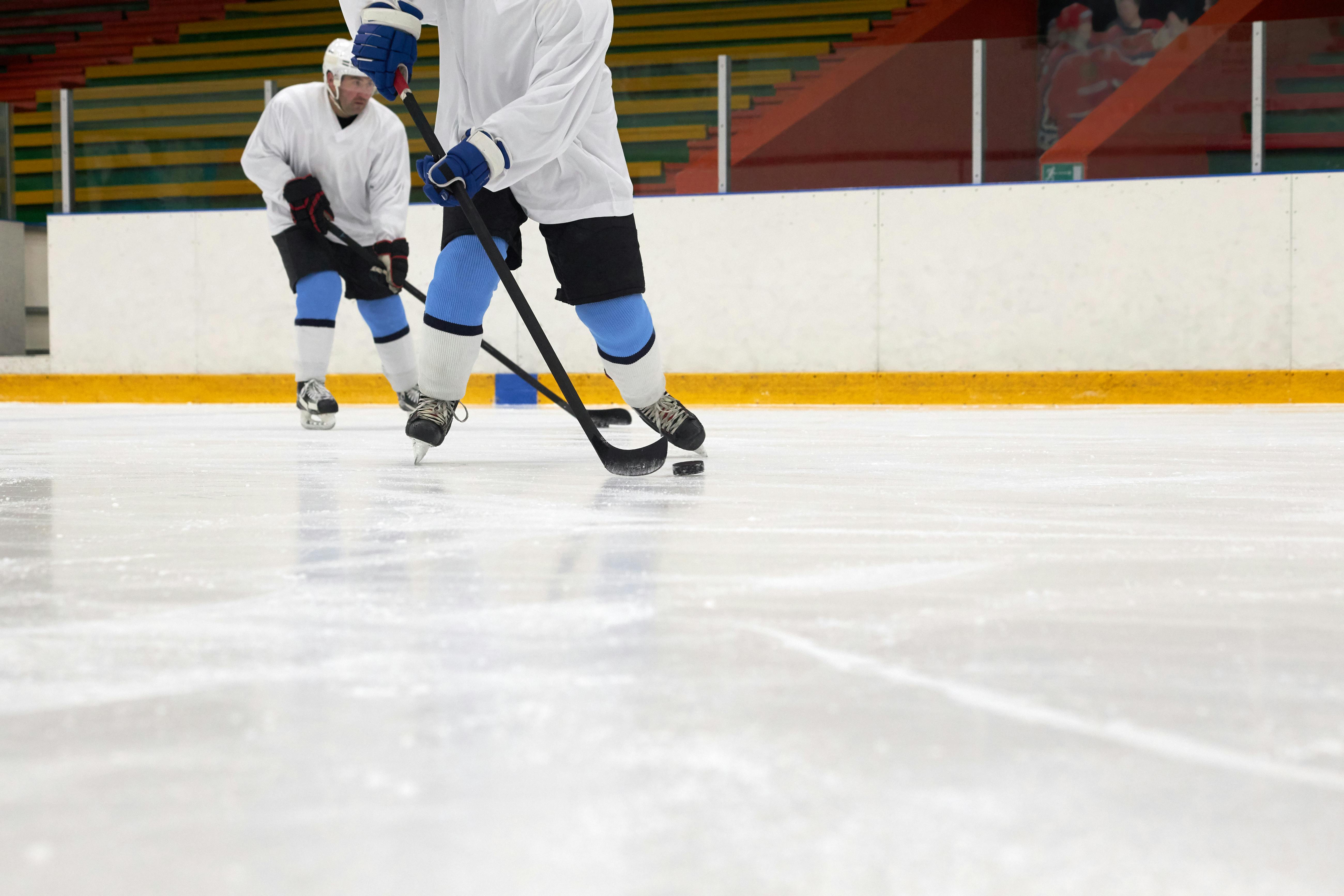← Back to Blog
Learn to Play Hockey as an Adult: A Beginner’s Guide
IceFinder Team
7/31/2025
Have you ever watched a hockey game and thought, “That looks like fun, I wish I could do that”? Good news: it’s never too late to learn to play hockey, even as an adult. Whether you’re completely new to skating or just haven’t laced up in a few years, there’s a clear path to becoming a confident player. At IceFinder, we’re here to guide you every step of the way, from finding your footing on the ice to joining your first game.
Get the Right Gear
Before hitting the ice, you'll need the right equipment. From skates to shin pads, hockey gear can feel overwhelming at first, but when you're first starting, you really just need two things: a well-fitting helmet and a comfortable pair of skates. Most ice rinks have ice skates available for rent, and we recommend you try skating first with rental skates, but you'll quickly find that they're not very comfortable or sharp, which can make them frustrating to learn with.
While you can save a lot of money purchasing used gear at your local secondhand sports shop or through online marketplaces like SidelineSwap, you'll want to make sure you get a brand new helmet to ensure there is no hidden wear-and-tear or damage.
After you've learned the basics of skating and are ready to start practicing with a stick, you'll want to purchase more gear. If you don't want to purchase used gear, you can purchase gear from online from sites like Pure Hockey, Hockey Monkey, or Ice Warehouse or visit your local hockey retailer in person. Most rinks will require partial or full gear to participate in drop-in events like stick and pucks or pickup hockey. Eventually, you'll want the following pieces of equipment:
Hockey Skates
Hockey Stick
Helmet: Protects your head from impacts and collisions.
Hockey Gloves: Shield your hands and wrists while allowing stick control.
Elbow Pads: Guard your elbows from falls, checks, and puck impacts.
Shin Guards: Protect your lower legs from sticks, pucks, and falls.
Shoulder Pads: Defend your upper body, especially shoulders and chest.
Hockey Pants or Girdle: Cushion your hips, thighs, and tailbone during contact.
Mouthguard: Helps prevent dental injuries and concussions.
Protective Cup: Shields the groin area
Neck Guard: Provides protection against errant sticks and skate blades.
Hockey Socks: Worn over shin guards to keep them in place
Practice Jersey(s): Loose-fitting jerseys worn over pads
Hockey Bag: A large, durable bag used to carry all your gear
Learn to Skate First (It’s Everything)
Once you have a helmet and skates, but before you pick up a stick or learn how to take a shot, you need to become a competent skater. The best hockey players at every level are good skaters first. Most rinks offer “Learn to Skate” classes for beginners, often labeled as “Adult Learn to Skate” or “Hockey Learn to Skate.” These are designed for beginners and will enable you to learn the basics and progress through more advanced skills at a comfortable pace. These classes focus on:
Balance and posture
Starting, stopping, and turning
Building confidence on skates
You should attend as many public skate sessions as you can to practice the techniques you learn in class and continue to build your muscle memory!
Join a Learn to Play Hockey Program
Once you’re comfortable on skates, usually after a few weeks or months depending on how frequently you are able to get on the ice, the next step is a “Learn to Play Hockey” class. Many rinks offer these beginner-friendly sessions to introduce:
Stickhandling basics
Passing and shooting techniques
Hockey rules and positioning
Many rinks offer adult-specific Learn to Play classes, so you’ll be on the ice with other beginners, not 10-year-olds flying by you. Also, many Learn to Play classes include scrimmage time so you can get practice in game situations.
Join a Low-Level League or Adult Beginner Group
After a few weeks (or months) of Learn to Play, consider joining a low-level adult league. Many rinks offer either a "Learn to Play" or low-level "D" league designed for adult learners. This way, you'll be matched up with other beginners and the skill-level will be relatively even.
These games are usually non-checking, supportive, and perfect for continuing your progress while having fun and meeting fellow hockey lovers. It can be nerve-wracking the first time you get on the ice for a game, but playing real games is the best way to improve.
Supplement with Camps and Clinics (Optional but Worthwhile)
If your schedule and budget allow, hockey camps and skills clinics can rapidly boost your skills. You’ll get focused instruction on areas like:
Defensive positioning
Power skating
Shooting accuracy
Game awareness
Check with your local rinks to see what camps and clinics they offer. Many rinks have weekly or monthly drop-in clinics, as well as seasonal camps for adults.
Practice Makes Progress: Get on the Ice Often
The real key to improving quickly? Ice time. Take advantage of:
Public Skate sessions to work on skating fundamentals
Stick & Puck times to practice with a stick and puck at your own pace
Pickup Hockey to get comfortable with game flow and light competition
Use IceFinder to find public skates, stick and pucks, and pickup hockey sessions near you. The more you skate, the faster you'll improve.

